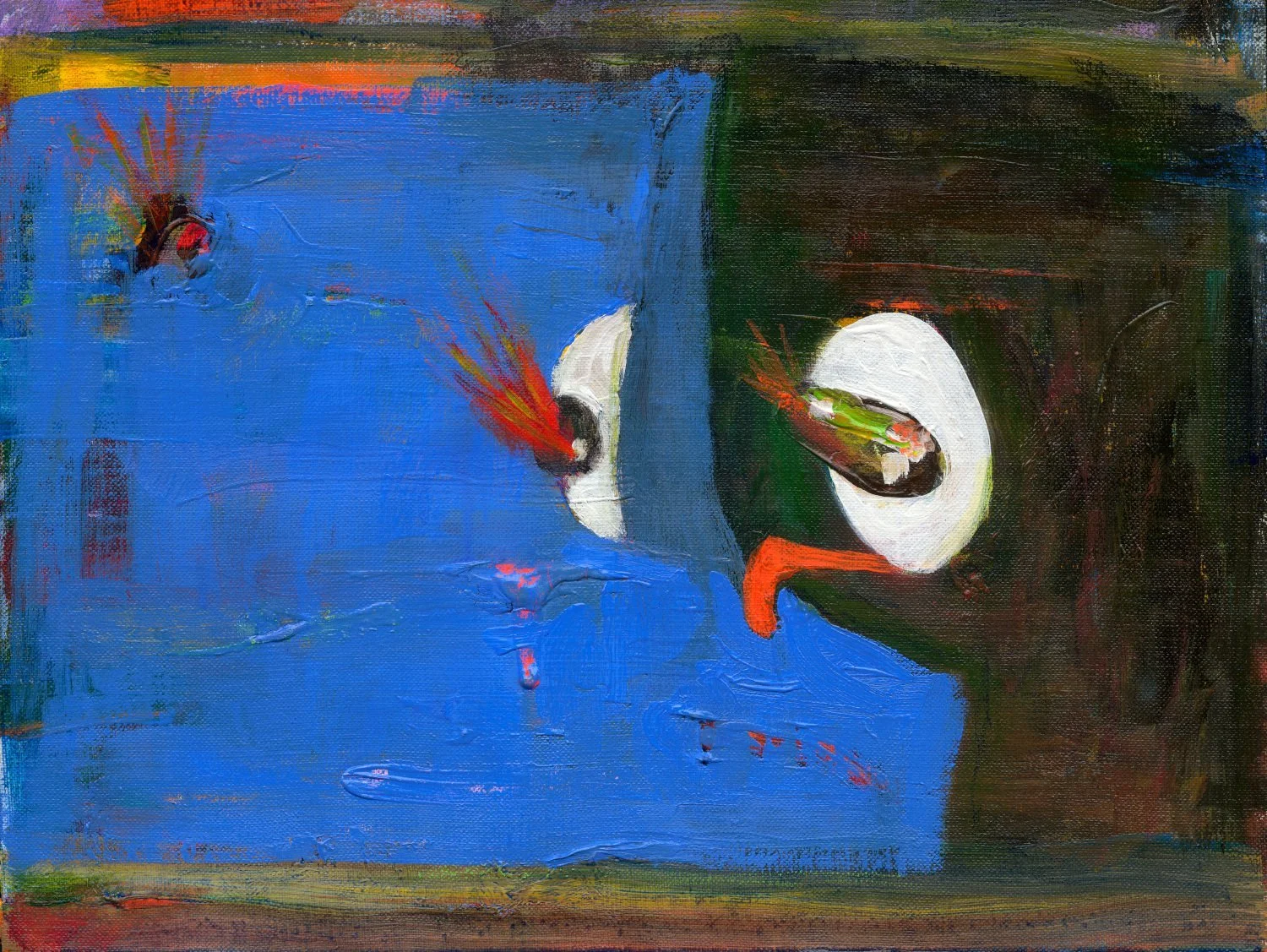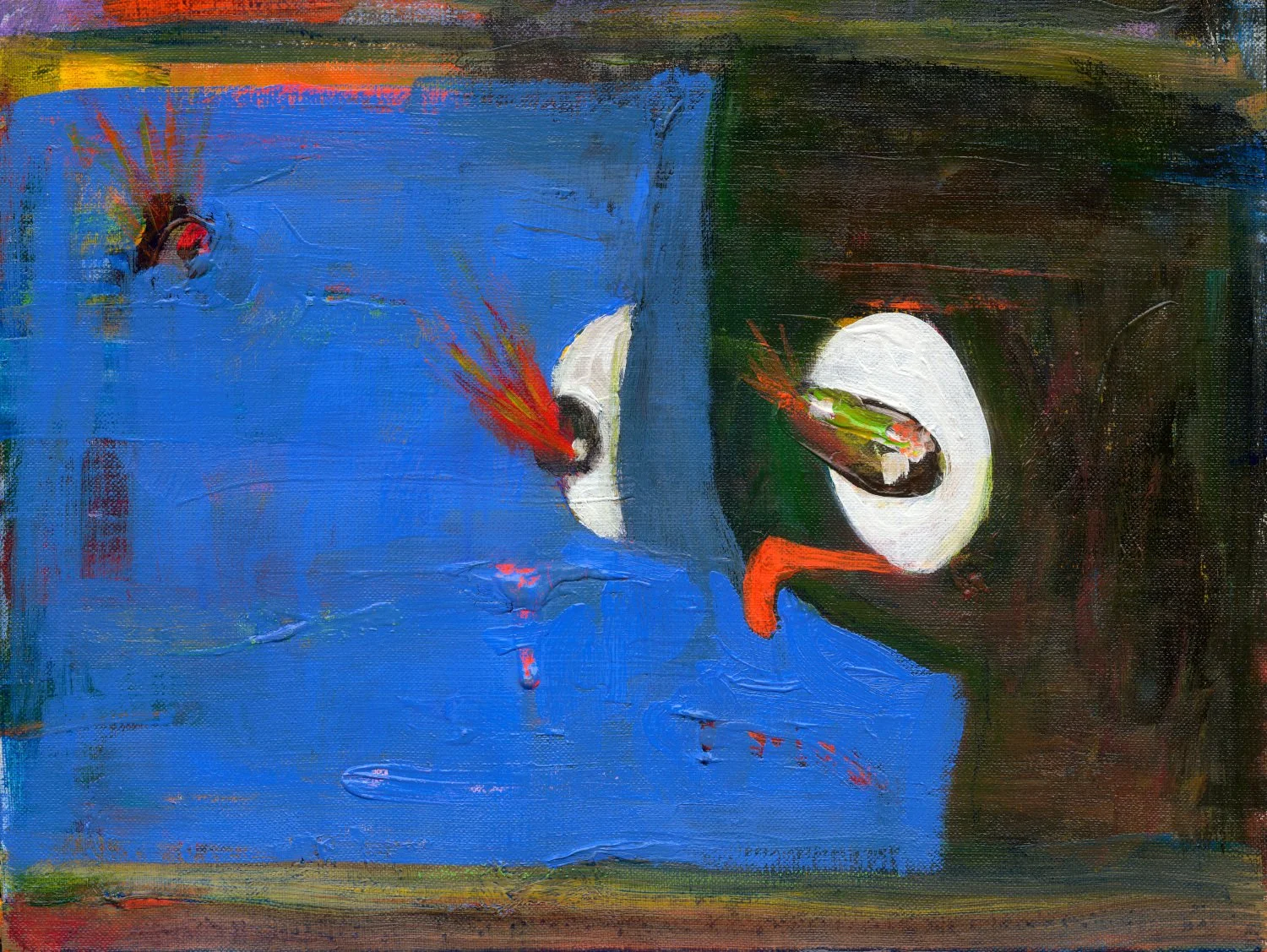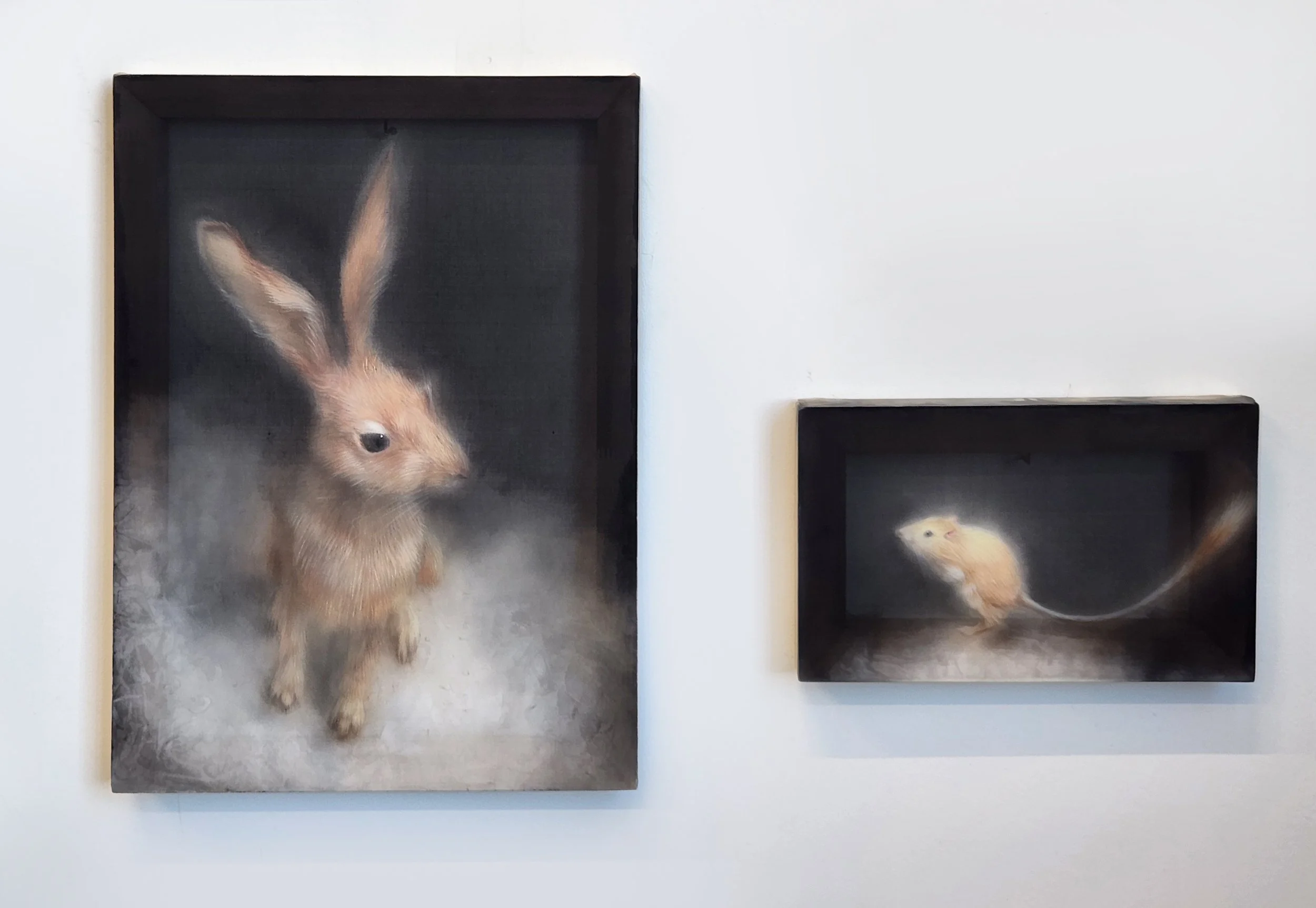10 Questions with Wei Ting Chen
Al-Tiba9 Art Magazine ISSUE11 | Featured Artist
Wei Ting Chen was born in Tainan, Taiwan. He spent his childhood cartooning, and he liked to draw with poems. At Fu Jen University, he majored in Chinese Literature and started to write poetry. Simultaneously, he read Roland L. Bachmann's concept of the fragment. When readers read his works, they need to put together his thoughts. For Chen, writing is a slice of life, and writing poems has become another way of making a drawing. His works are mostly paintings with acrylic and oil pastel, often accompanied by verses that correspond to the visual arts and provide a hint. He always thinks his works show the differences between children and adults. In addition, he also works with different media, such as video art, performance, and sculpture. He has exhibited overseas, such as in New York, Beijing, Hong Kong, Japan, and so on. Some of his works can be found in the collection of Lih-Pao Cultural Arts Foundation.
In order to seek more opportunities for exchange with artists and new projects, he currently lives and works in Tokyo.
Wei Ting Chen - Portrait
ARTIST STATEMENT
“In my creations, I used a lot of childhood memories and symbolic figures such as teddy bears, antique toys, intuitive graffiti drawings, costume characters, and so on. My painting started as diary recordings, which tend to be in a written form. So this writing is more like an interpretation of my work.
What is painting? I often ask myself this question, which constantly deconstructs and constructs my thoughts. Specifically, instinct drives me to write about these fragments of my childhood, like words and poems in my images, figurative but present. I still remember the moment in my childhood when I was watching television and playing by myself with toys, which I still keep. These childhood experiences may be common in the declining birthrate era, and some might share the same feeling—longing to play with someone and growing up without noticing the desire.
My personal experience is a characteristic of my generation. It writes feelings I face unclearly but intuitively and willfully awakening the utter innocence under my skin. I strongly believe that creativity is the way I converse with the world.” - Wei Ting Chen
Falling and see yourself, acrylic, oil pastel and colored pencil on canvas, 194x130 cm, 2022 © Wei Ting Chen
INTERVIEW
You majored in Chinese Literature at University; how did you get involved with art?
When I was in college, I was introduced to a course in aesthetics. The purpose of the course was to allow students to find their own aesthetic status, starting from the question "Who are you?" So I began to think about the relationship between the individual and the external. We always define ourselves by the other, e.g., nationality, culture, things in our memories, things that seem like fragments that are gradually pieced together into a "who I am" existence.
The impulse of these explorations led me to read books on contemporary trends, such as Roland Barthes, Nietzsche, and John Berger, and in the context of my own Chinese literature, on contemporary poetry and Laozhuang philosophy, which made me think about "I". I think the beginning of art happens by thinking about existence.
When did you decide to become an artist full-time? And what do you wish you knew about contemporary art before starting?
I launched my first solo exhibition, "Long Dream", in 2015, and it was an exceptional experience, completing an exhibition experience in a space of 80 pings. At that time, I felt that art was one of the ways of expression and that through it, I could express myself freely and personally.
I think the text of art is open to all interpretations, even if everyone's apple is not the same. Like the concept of "the author is dead, God is dead," everyone can read all kinds of art through their own eyes, and the "openness and possibility" of this is my understanding of art.
Each Other, acrylic, oil pastel, colored pencil on canvas, 45x37.5 cm, 2017 © Wei Ting Chen
Running Desire, acrylic, oil pastel, colored pencil on canvas, 45x37.5 cm, 2017 © Wei Ting Chen
You are currently living in Tokyo. How do you find the city, art-wise? How did it help you improve your work and visibility?
"Japan is a country of symbols." This is a quote from Roland Barthes in his book "The Empire of Symbols," and it is very applicable to my feelings about Japan.
Since moving here, I learned about the Japanese advertising culture, where "mascots" can be placed in any advertisement. I felt that it was almost like "everything has a spirit" even though these characters are full of commercialism and understandability. Yet, they can be used as a way for people to "transform". In addition, as in contemporary Japanese poetry, Japanese culture has the idea of "material sorrow," which describes how we experience everything in the world with the heart and intuition, and how everything is felt with a heart that is moved. As "The Little Prince" mentioned, "What is really important cannot be seen with the eyes, but must be felt with the heart".
As for my work and visibility, I have been watching the Japanese business model and the exhibition format in recent years. Even though art is an open text, if it is presented in an exhibition, it must be understood, making me examine how to create and express my work. But the expression I am referring to is not about creating works that can be understood, but how to make the viewer think about the content of the work.
You work with paintings and pair them with poems. How is your literature background helping you in doing so? Could you also talk about the reason behind pairing paintings and poems?
I think the literary background is the way to establish how I write. I like to use poetry in a way that does not completely destroy the interpretation, but gives the viewers room to interpret themselves in a world of poetization. The keywords are hint, symbolic, and open.
However, the pairing of poetry and painting comes mainly from Roland Barthes' "fragment" writing technique. Fragments refer to the small words in life that are gradually pieced together to form a shape, similar to a jigsaw puzzle. I think that the completion of a work is to express thoughts - no matter what method is used, it is to express the concept. Therefore, I choose poetry and painting as my medium of expression, just as the pieces are linked together to become content.
Mixed color, acrylic, oil pastel on canvas, 41x32.5 cm, 2022 © Wei Ting Chen
The Bremen Band - together, acrylic and colored pencil on canvas, 88x106 cm, 2022 © Wei Ting Chen
Falling Sun, acrylic, colored pencil on canvas, 92x75.5 cm, 2020 © Wei Ting Chen
In your statement, you mention that in your paintings, you use "a lot of childhood memories and symbolic figures such as teddy bears, antique toys, intuitive graffiti drawings, costume characters and so on." Why did you choose to work with these elements, and what do they represent for you?
These elements are the fragments that I found in my exploration of "What is me? Who am I?"
When I started thinking about "aesthetics" in college, I was examining my own past. Perhaps these seemingly other-worldly elements construct a present about me as a person. For example, the room of my childhood memories, the toys scattered in the room, the cotton of the bear puppet, the crayons in kindergarten, the drawing books on the bookcase, the costumes in the amusement park and the zoo, and even the flowers in the park.
All of these memories gradually formed the context of my creations, and so I present them in my works. Although private, it seems that I can unconsciously see some common experiences of my time. For example, the contents of picture books, animations on TV, toys I collected as a child, and so on. These fragments are not only about me, but also about that common experience.
What does your artistic routine look like? Do you have a set schedule, or do you work following your inspiration?
I start my work with my manuscripts, and sometimes even with a few poems. Furthermore, I adjust the exhibition according to its time and space. In recent years, I have continued to use a few poems as the narrative of the exhibition, hoping that these suggestive words will allow the viewer to interpret the content of my creations on their own.
As for the content of the exhibition, sometimes it is derived from the words that come to my mind at the moment when I read a book, listen to a song, jog, or take a bus, like a process of searching for a book in a library. I think I also try to turn those parts of my life into creations.
Do you have any other themes you would like to tackle or any other medium you would like to experiment with?
Recently, I intend to study the idea of "mono-no-aware" (物の哀れ)in Japanese literature. The impermanence of life and the proposition of life and death are my concerns - for example, a crying bear and a smiling flower, a vacant chair, a fading flower, and a newborn bud, a burning flame, and a calm water surface, and the contrast of two colors.
Furthermore, I have recently been looking at medieval paintings and Tibetan mural culture, which involve religious contents that strongly reflect the theme of life and death. These are the themes I would like to develop and try in the future. Perhaps, apart from art, the subject of reincarnation of life and death is a subject that cannot be separated from human nature. In recent years, I have also started to copy the Heart Sutra, and one of its lines, "all phenomena bear the mark of Emptiness(諸法空相)", reminds me of the Taoist spirit of facing death - to let nature take its course.
Fragments of Poetry, Exhibition view © Wei Ting Chen
Fragments of Poetry, Exhibition view © Wei Ting Chen
Let's talk about the art market and your collectors' base. You already have a good following; what do you think of the art market? And how do you keep your collectors engaged in your latest projects?
The art market is out of control, it is an invisible hand. There are many complicated factors behind the market that the artist cannot interfere with. The only thing an artist has to do is to be responsible for his creation and how to present the next project. That is the most important thing.
My projects are often open to everyone and are not limited to collectors. For example, the "____" project that I posted on Instagram was open to anyone who provided a word, and that word would be followed by another content, one that I couldn't be sure of. For me, everyone has their own perspective, and these eyes provide me with a way to think about writing. It is worth mentioning that my "writing" is an action that includes painting, poetry, works on paper, and even three-dimensional works. I think this action can better reflect the inner content that I want to present through the fragments.
Fool Bird, acrylic, oil pastel, colored pencil on canvas, 80x60.5 cm, 2017 © Wei Ting Chen
Talking about the future, what are you working on now? Do you have any upcoming exhibitions or projects?
For the future, I have been applying for art residency projects. I look forward to creating in various places and linking with the local cultural background to accomplish different content. I am also planning the exhibition part, and I hope to accomplish something that I want to do in each exhibition. Of course, there are some other special projects in progress, and I will update my page from time to time.
Finally, what do you hope to accomplish this year in terms of career goals and personal life?
I hope to complete a new collection of poetry, the last of which was in 2016. In addition, I plan to continue the academic part of my Ph.D. and gradually complete my recent research and concerns.





























